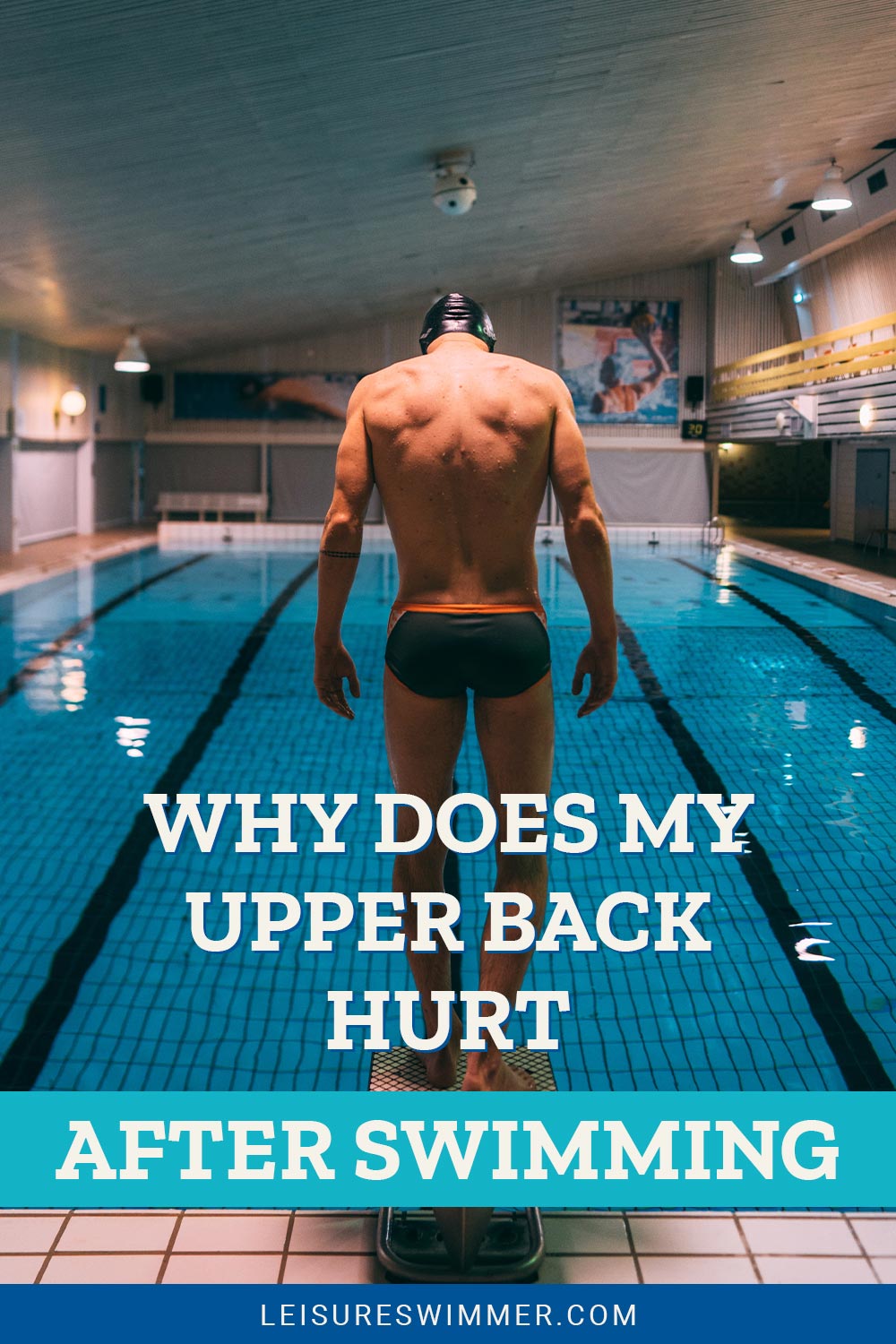Why Does My Upper Back Hurt After Swimming
We may earn commissions for purchases made through links on our site. Learn more on our about us page.
Swimming is widely regarded as one of the best low-impact exercises a person can do to get, or stay, in shape, but that doesn’t mean that it is a miracle exercise with no drawbacks.
The cause of your upper back pain after a swimming session could be because of the nature of your swim stroke, improper form and posture while performing the stroke, or both.
Read on to learn more about the causes of upper back pain in swimming, what you can do to prevent the pain, and more.

How Can You Stop Upper Back Pain After Swimming?
Upper back pain caused, in some way, by swimming is not as common as lower back pain but is still possible. Unfortunately, there is no way to make 100 percent of the pain go away immediately because your body needs time to heal.
If you’re already hurt after going for a swim, here are a few ideas that should mitigate the pain and speed up your recovery:
- Take the instructed dose of over-the-counter pain medication with active ingredients such as acetaminophen or ibuprofen
- Gently stretch your upper back muscles with targeted exercises or methods such as foam rolling
- A warm shower or hot compresses that focus on the affected area can reduce some swelling and pain
- Avoid exerting too much force on the upper back muscles for a few days if possible
Can You Prevent Pain Caused by Swimming?
Even though swimming may have caused the pain in your upper back, you may not want to give up swimming just to prevent the pain. Luckily, there are ways to prevent the pain from starting up in the first place.
- A big reason for upper back pain is overuse and strain on the muscles, so don’t swim every day if you don’t have to
- If you still choose to swim daily, cycle through targeted exercises throughout the week so one set of muscles can be worked while another set rests
- Consider hiring or consulting with a professional swim instructor to make sure your posture and form are correct, so you don’t hurt yourself
A combination of one or more of the above solutions and advice from others can go a long way to preventing pain across the body, including the upper back.

Should You Be Worried if You Have Back Pain After Swimming?
Back pain after an intense or long period of swimming is not necessarily a cause for concern. Sometimes the pain comes from weak muscles struggling to keep up instead of an actual problem.
If you don’t regularly exercise those muscles (or any muscles for that matter), it is possible to feel pain since your muscles have been working hard and aren’t used to the strain. This pain is usually associated with being tired as well.
Pay attention to these signs if you are worried about your swimming-related back pain:
- You feel a tingling sensation or numbness down the legs or in the buttocks
- There is extreme pain or spasms in your back muscles
- Other compounding symptoms such as fever or weight loss manifest
These can indicate a more serious issue that should be looked at by a healthcare professional.
For How Long is the Pain Normal?
If you are experiencing upper back pain, it is your body’s natural signal that something is wrong. However, most pain subsides over time until it goes away completely.
The time it takes for your body to heal itself depends on a few factors:
- Nutrition
- Age
- Underlying conditions
These are just a few possible reasons why your healing process may be faster or slower than others. Usually, a couple of days is all you need to feel better.
However, if your pain doesn’t at least begin to improve after a week of taking it easy, contact a doctor for further advice and examination.
Should You Stop Swimming if You Keep Getting Back Pain?
You don’t have to stop swimming entirely when you experience back pain. In fact, many physical therapists and doctors recommend some leisurely swimming, especially for lower back pain.
The point of swimming is to gently work the muscles so your body can send them the energy and nutrients they need for recovery and prevent them from potential atrophy since people tend to underuse injured muscles.
Once the pain passes, you may be concerned about swimming again, but you can simply choose another swim stroke to use while avoiding straining your back.
Backstroke is considered the lowest impact on all parts of the spine when done correctly, while the breaststroke and butterfly can be particularly harsh on the upper back.
Final Thoughts on Upper Back Pain After Swimming
Swimming is a wonderful way to have fun, stay cool in the summer, and get into shape. However, without proper form, you may be accidentally hurting your body until it eventually tells you in the form of pain.
By appropriately spacing out your swimming sessions, rotating what muscle groups are being worked on, and learning correct posture, you can prevent most injuries from occurring and focus on enjoying the water.


